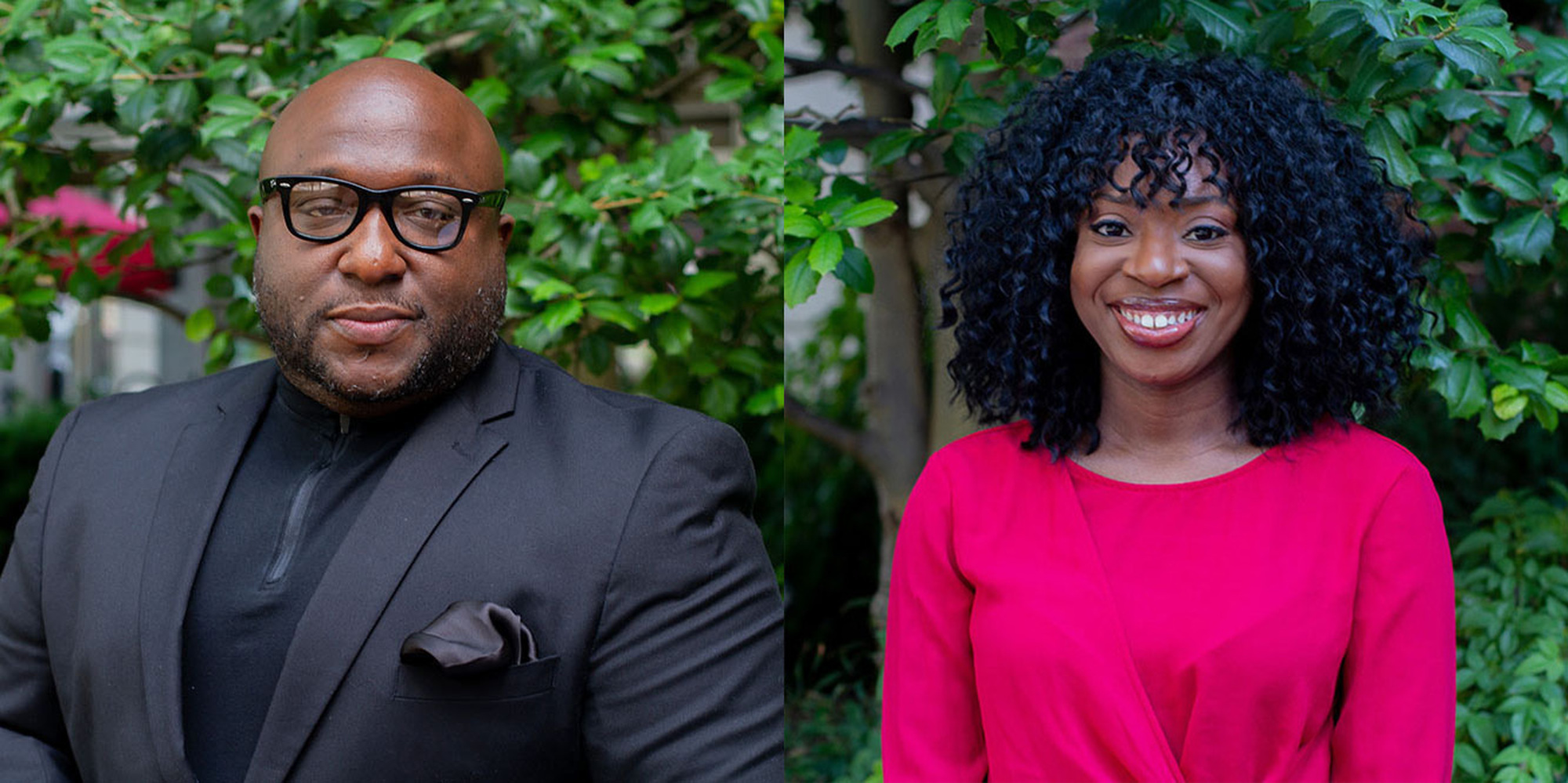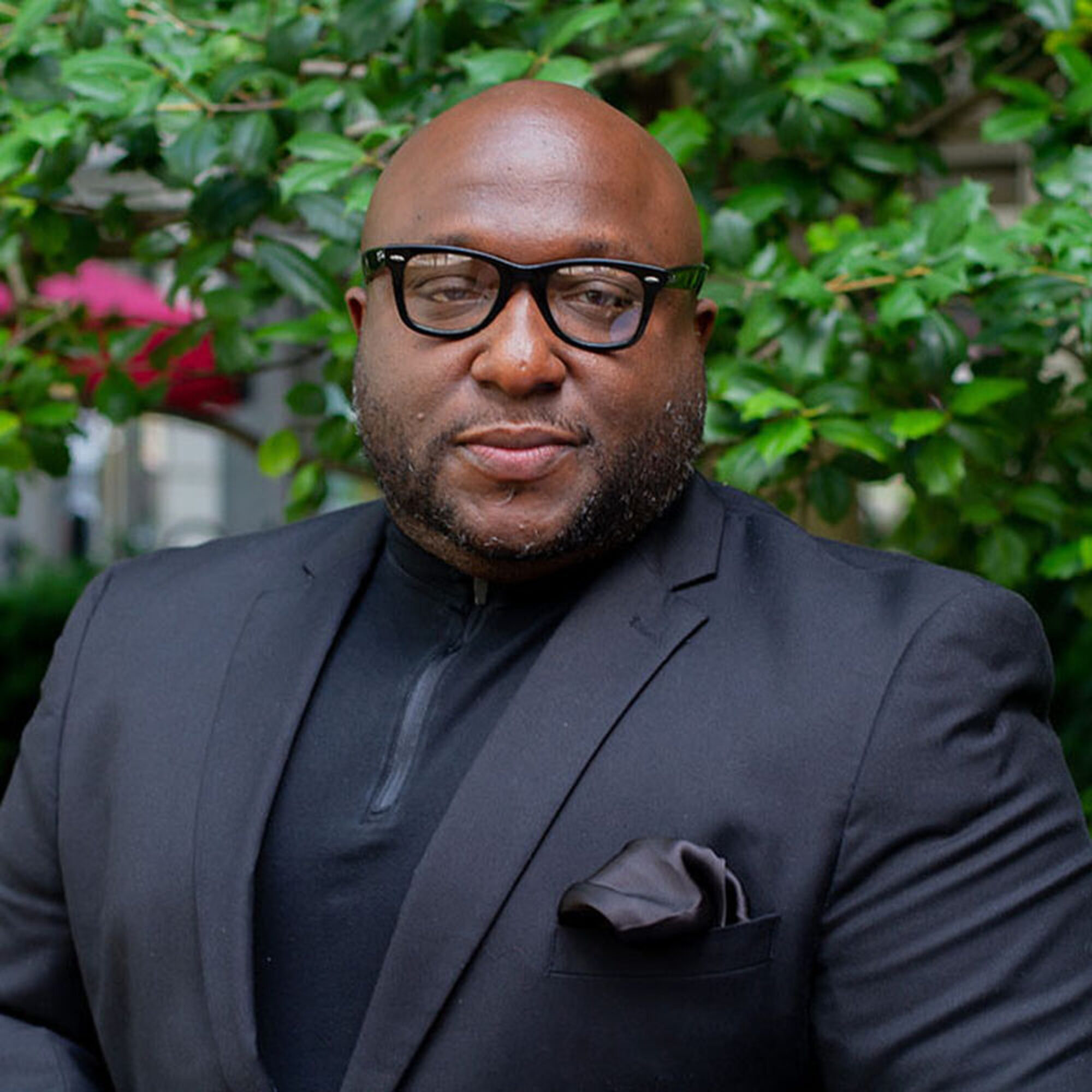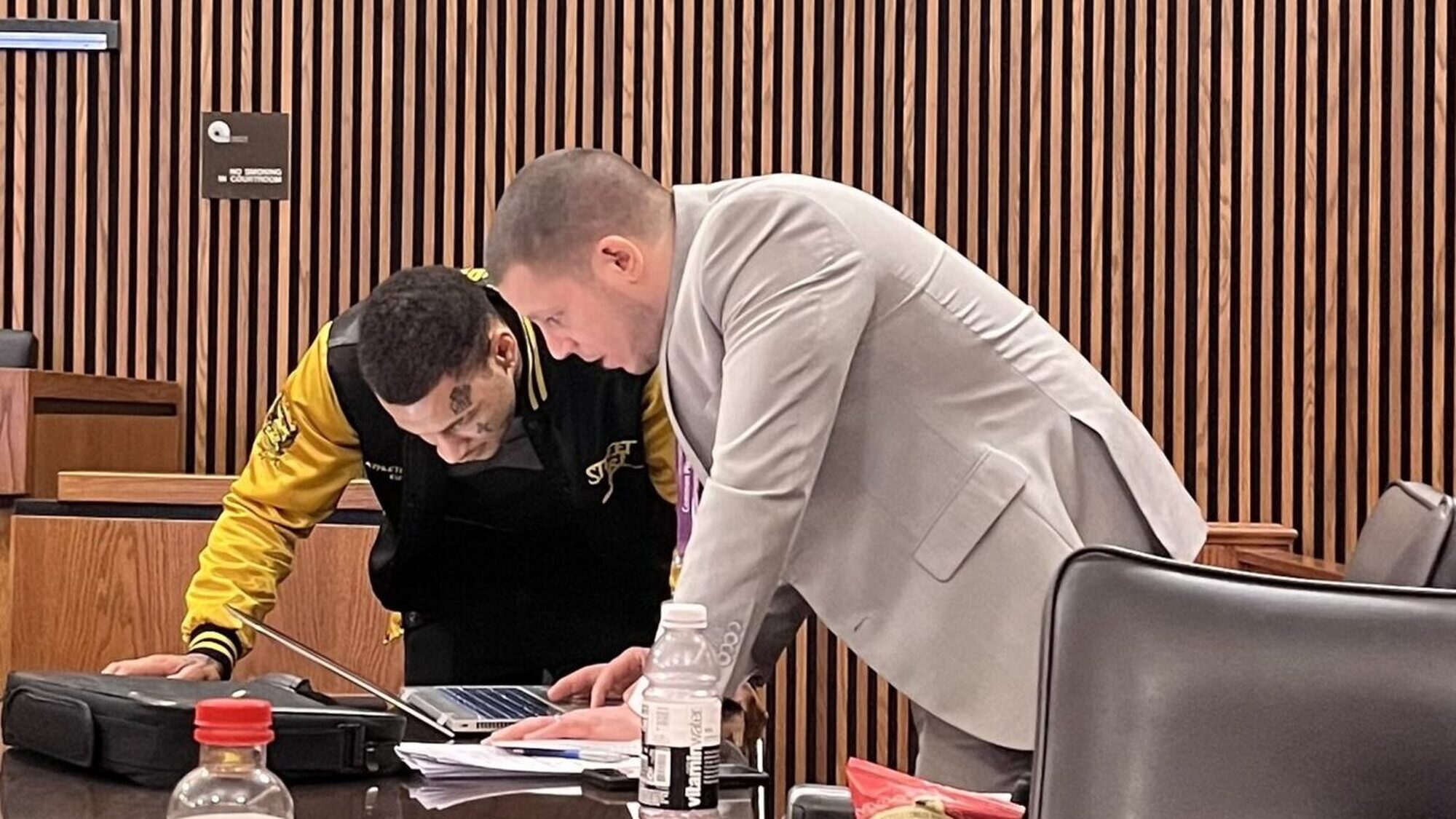Domestic violence and intimate partner violence (DV/IPV) charges are among the most complex cases that pretrial systems manage. They require individualized responses to ensure that decisions are intentional and informed. There are no simple answers, but pretrial systems that prioritize cross-agency and community collaboration can improve their responses and reduce harm while striving to balance the rights of the person charged and the safety and needs of survivors.
At the Center for Effective Public Policy, Dr. Kelvin Banks, associate director, and Keilah Joyner, program associate, have been developing APPR’s DV/IPV training series for pretrial professionals and their community partners. The trainings are designed to develop effective responses for pretrial systems and the broader criminal legal system to address and reduce the harm associated with DV/IPV. Banks and Joyner also lead APPR’s National Domestic Violence/Intimate Partner Violence Workgroup, which seeks to develop more training, resources, and technical assistance for the field.
This interview was edited and condensed.
APPR: What is the distinction between domestic violence and intimate partner violence?
Dr. Kelvin L. Banks: Domestic violence, or DV, involves people who live under the same roof, but they are not always intimate partners. DV can occur between siblings, a parent and child, and roommates. Intimate Partner Violence, or IPV, is about people in a romantic relationship who may or may not live under the same roof.
Keilah Joyner: Intimate partner violence and domestic violence can be physical or psychological. Often, we think of them exclusively as physical violence. But when we look at research, people are more likely to be victims of psychological violence first than physical violence. The criminal legal system only addresses physical violence, but we need to be able to address both to reduce harm.
APPR: How prevalent are DV and IPV in terms of violent crime?
Dr. Banks: We are collaborating in one jurisdiction where 50 percent of their violent crime was domestic violence and intimate partner violence. In some jurisdictions, the rate is higher. That’s an alarming amount. We saw an increase during the COVID-19 pandemic that may be related to people being at home more than before.
APPR: What makes DV/IPV cases so challenging for pretrial systems?
Dr. Banks: DV/IPV cases are nuanced and complex. The violence can be psychological, emotional, and physical, as well as sexual and economic. It can involve children. People’s finances are involved. It is underreported. We know women do leave violent relationships, but that separation is the primary risk factor for death. All of that intersects with the criminal legal system and the presumption of innocence. A first-time misdemeanor DV offense can quickly become a fatality, particularly with intimate partner violence. Often, local governments simply don’t have conversations about how their systems process DV/IPV cases out of fear that they’re going to do harm. But not having the conversation can result in finger-pointing.

APPR: Can you share an example of what can happen by not having the conversation?
Dr. Banks: In one jurisdiction we worked with, there was a fatality in a DV case. In this specific case, no one notified the victim that the person charged was being released. After the tragedy, there was a question about which local governmental agency was responsible for victim notification.
A reporter went to the sheriff’s office, pretrial services, and the prosecutor, and each agency said no, victim notification wasn’t their responsibility. We literally have a newspaper story where each agency pointed the finger and said the other agencies were responsible. The point is that even stakeholders in the same pretrial system didn’t know who was responsible.
APPR: How can local pretrial systems improve their responses to DV/IPV cases?
Dr. Banks: There are three things. The initial step is forming what we call a Coordinated Community Response Team. This multidisciplinary team meets to discuss domestic and intimate partner violence within the community and should include system and community stakeholders. This team should look at local data, map how DV/IPV cases move through their pretrial system, and look at case studies. When someone has lost their life to domestic and intimate partner violence, it is important that a multidisciplinary team intentionally comes together to have conversations about what happened, reassess local practices, and look at their data.
When it is safe to do so, bring survivors of DV/IPV to the table. At some point, you might even have discussions with people who have been accused or convicted of DV/IPV to bring additional insight to their conversations, but in a very responsible way.
We know pretrial systems work in silos. Everyone is an expert at their stage in the system, but again, these cases are so nuanced and layered that you need to have everyone at the table, including DV/IPV experts. When pretrial systems have a multidisciplinary team, they share information that might not be common knowledge among other system and community stakeholders. They can identify gaps and where they want to spend their resources. We also think this helps stakeholders build relationships, so if there is that tragic case, it doesn’t result in finger-pointing. We know pretrial systems will never be able to completely eliminate harm, but they can do a lot to reduce harm by increasing collaboration and knowledge.
Second, in addition to a Community Coordinated Response Team, having a DV-related risk assessment tool can help. Some DV assessments are used by law enforcement to support survivors by connecting them to community-based services. Some are used by prosecutors, defense counsel, and judicial officers to help inform decisions about pretrial detention, release, and conditions of release.
Third, we also recommend local jurisdictions form a High-Risk Fatality Team. These teams identify the most dangerous cases, often through an evidence-based assessment or some type of screening, where a person is at risk of serious physical harm or death. The team then provides a coordinated response to those high-risk cases to get victims access to services and support. It might also increase monitoring for the people accused. These teams might meet weekly to manage cases where people are most at risk, or they might come together quickly as needed. But they can work fast to form a safety plan for survivors, and for children if they are also involved.
Ms. Joyner: The data that is available tells us that more than 80 percent of male and female rape victims reported that their first victimization occurred before the age of 25. Women are more likely to be victims of DV/IPV. The true prevalence of men’s victimization is unknown due to underreporting.
While domestic violence can affect anyone, certain communities are disproportionately impacted. There is a need for culturally responsive and gender-responsive services when we’re talking about DV and IPV victims, as well as those who are accused. As a system, we can do a better job.
APPR: Tell us about APPR’s National DV/IPV Pretrial Workgroup and its goals.
Ms. Joyner: The workgroup is a multidisciplinary team that includes community members, pretrial service agencies, public defenders, prosecutors, law enforcement, researchers, and, most importantly, people whose lives have been impacted by domestic violence. It’s so important to include their perspectives.
Every pretrial system is different; every jurisdiction is different. This group allows us to understand the responsibilities and the limitations of people in different sections of a system. The prosecutor may have certain responsibilities as well as limitations, as do the defense attorney and judge. This group expands everyone’s knowledge about their role in handling DV/IPV cases. That helps them build pretrial strategies and broader criminal legal system responses that reduce DV/IPV and support community well-being.
Dr. Banks: The workgroup’s mission is to offer training, technical assistance, and policy development that improve the safety of survivors, advance community accountability, and balance the needs of victims and survivors with the rights of the people accused. We envision a brave multidisciplinary group engaging in difficult conversations, unpacking the nuances and complexities of DV/IPV to educate the criminal legal field to reduce harm and improve community well-being.
We all have this professional intersection with DV/IPV, and some in the workgroup have a personal intersection. Sometimes, the conversations in this group are very heavy, and we don’t always agree. But we’re talking through them in a very respectful, civil way, and protecting each other as well. We come to this with shared values and a shared goal of developing resources and policies that support the efforts of the pretrial field.
APPR: This workgroup recently conducted a DV/IPV pretrial system needs survey. What have you learned from the responses?
Ms. Joyner: Over 140 people in 45 states responded to our survey. One thing that surprised me was the number of jurisdictions with a specialized caseload or docket for DV/IPV cases—about 35 percent of those responding. We know a specialized docket allows DV/IPV cases to be handled and resolved more efficiently, effectively, and consistently, and allows people to address the behavior of violence quickly. We’ll be posting the survey findings on the APPR Community.
Dr. Banks: Of those who completed the survey, most jurisdictions don’t have a Coordinated Community Response Team or High-Risk Fatality Team. Most did not have a DV-specific assessment tool to measure the risk of lethality, meaning the factors that would indicate an increased danger of serious physical harm or death. The pretrial practitioners are saying they want more assistance to form more effective responses to DV/IPV.
APPR: October is Domestic Violence Awareness Month. Is there one thing you want people to be aware of this October?
Ms. Joyner: As a society, we like to put people into buckets—good or bad, victim or perpetrator—and while sometimes those associations may apply, my hope is for people to wrestle with the possibility and tension that people sometimes can be both. People can be harmed and can cause harm. Once we’re able to do that, we can address not only the behavior but also the trauma that is associated with surviving violence.
Dr. Banks: If we’re not having the conversation, we’re contributing to the problem. DV/IPV is more pervasive than is documented and recorded. Let’s have those conversations. Lean into the discomfort, don’t run from it. We don’t live in a world where harm doesn’t exist, but we certainly can do things to reduce harm.
Additional Resources
DV/IPV Training Series
This series of trainings on DV/IPV is designed for pretrial practitioners and community partners to develop more effective responses to address and reduce harm associated with DV/IPV.
Gender Justice Pretrial Toolkit (pdf)
A toolkit with guidance, tools, and resources for judges, practitioners, and system-impacted people.
Guide to Pretrial System Mapping
Use our guide to collaborate with system and community stakeholders to map how DV/IPV cases move through your system.
Pretrial Services Inventory
This resource can be used to create an inventory of the services and support for DV/IPV and to identify where there may be gaps.



